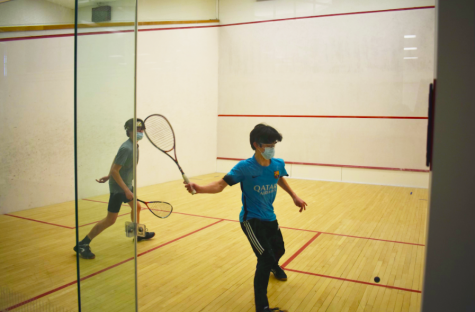It’s Time to Modernize Senior Prefect Elections
Groton, in its 135-year-long history as one of the nation’s top schools, has acquired quite the reputation for changing with, sometimes even before, the times. Once a school for rich white Christian boys, the administration decided to admit its first African-American student in 1951, a time where Jim-Crow laws ran rampant in the United States. In 1975 Groton continued its inclusionary streak, opening its doors to women. Today, we have only furthered our revolutionary trend; we have a Black headmaster, an incredibly international and diverse student body, a proactive Diversity and Inclusion committee, and the GRAIN initiative to make Groton more affordable. As the world has grown to preach messages of globalism, inclusivity, and diversity, so have we; and our willingness to evolve is a characteristic that allows us to stand out amongst other boarding schools that are slower to change. We ought to continue this streak of running ahead of the trend, making decisions that are reflective of our ever-changing society, by reforming the one of the school’s longest held institutions – the prefectship. By changing the way we elect our prefects, we can ensure that the job is inclusive of all genders, and that the student body elects leaders who will actually represent the school well.
Currently, in electing our house and senior prefect pairs, we require that one must be a boy and the other a girl. Before I go into why we ought to change up this heteronormative and cisgender-centric rule, it’s worth looking into why such a requirement exists. From George Rublee in 1886 to Nicholas Alvyn Brown in 1989, there was only one senior prefect. Even though women arrived at Groton in 1975, the job of senior prefect belonged to men, reflective of the patriarchal implicit biases that were beholden to a historically male-dominated school. It was Headmaster William Polk who decided to create the gender requirement for house and senior prefects, expanding the role from one person to two, as a way to open up the space to women.
However, today, in an age where the conversation about gender has expanded to include people beyond the binary, this requirement is archaic and dangerously exclusive. Say that a non-binary student gets elected to be senior or house prefect, what do we do then? Do we open up a third gender requirement, increasing the number to three senior (or house) prefects? At that rate, the argument could be made that we might as well keep going to include the multitude of different human genders that exist on the spectrum, and at that point the prefectship would become useless. The solution here, to make the prefectship gender inclusive, is to strip it of the gender requirement all together. Doing so would not only show the student body that anyone, regardless of their gender identity, can become a prefect; it could also force students to choose people based on their virtues and leadership qualities, rather than on the basis of a gender requirement.
This idea of having non-gendered school prefects is already being put into practice at Holderness Academy. Like us, their prefect candidates don’t run for the positions, and are chosen by the student body. Unlike us, students choose their leaders by evaluating them based on four traits: “Fairness, Initiative, Dependability, and Empathy.”
The main con, however, for both Holderness’ electoral system and our current voting process, is that not having candidates campaign means that elections can turn into popularity contests, where people who don’t care about having such a role end up being prefects. Voting for prefects without a gender requirement, with our system the way it is now, would only worsen the situation; Therefore, in order to make the leadership position more gender-inclusive, while also ensuring that students vote for character first, we need to reform our electoral process altogether and let candidates campaign.
The way the process works right now is that we have two rounds of voting. In the first, the entire form is sent two lists, one of boys and one of girls, and is told to choose four from each list. Then, in the final round, we are asked to rank the four people from each gender who received the most votes in the first round. The girl and boy with the most votes get to be senior prefect, and the two with second most become house prefects.
In my idea for a new voting process, there are still two rounds of voting. In the first, one list of all the people in the form gets sent out, and prospective seniors choose eight people they think should be prefects. Once the eight people with the most votes have been selected, those students should be allowed to campaign. That means flyers, cookies, buttons, speeches, debates, promises, initiatives, the whole democratic deal. Doing so will allow for these chosen candidates to prove to students that they care about the leadership position they have a shot at getting, and that when they get there, they’ll actually do something with it. In return, when students vote, they can do so while thinking (hopefully) about how well these candidates adhere to Groton’s values of service, inclusivity, empathy, and kindness.
Though a cynic could say that, in the end, all this voting reform is useless because there will always be students who choose popularity over character, and some might argue that there aren’t even enough students here who identify outside of the gender binary so the chances of them being elected are low, I ask them to think about what Groton has stood for historically, and what it should continue to represent for years to come. As a school that places so much emphasis on the power of the individual, on what including one voice can do to shift the mindset of a society, I would like to believe that our students understand the importance of character and inclusivity. If senior prefects are ultimately the ones whose names are engraved onto those walls of the senior section, then they ought to be people who represent this school well.












